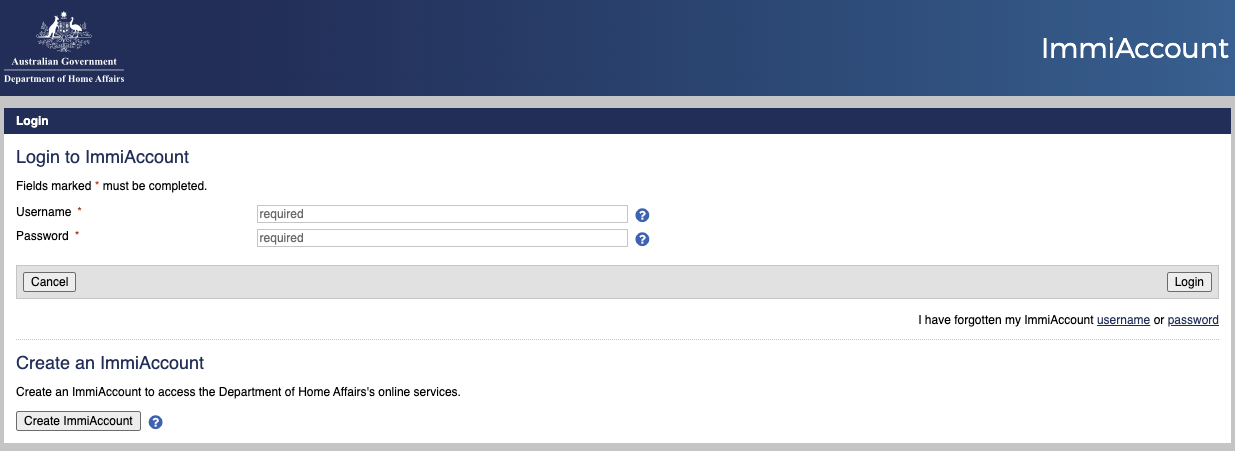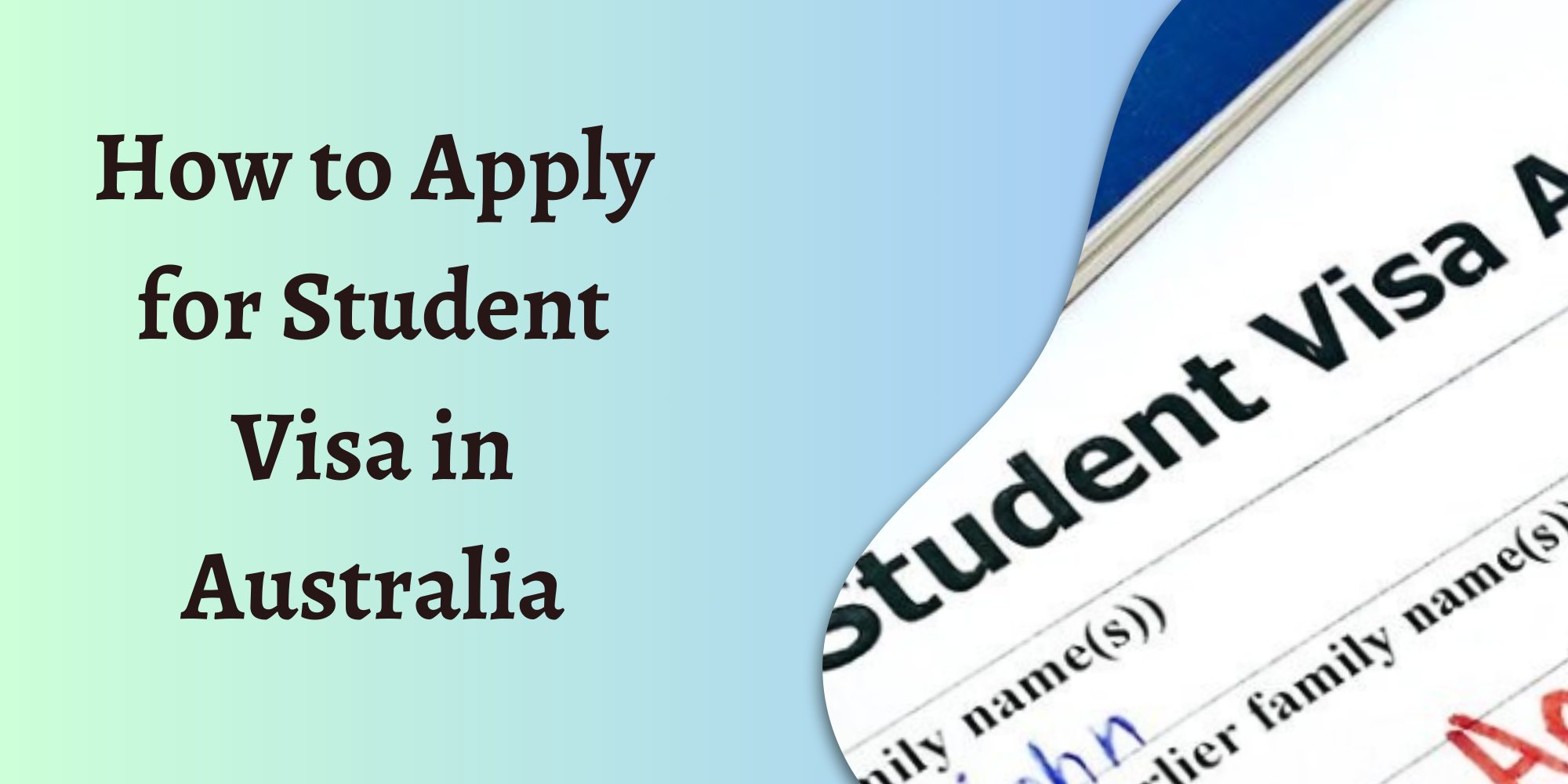To be able to study and experience Australia’s top-notch education, you must first apply for a student visa in Australia. The student visa subclass 500 allows international students like you to:
- pursue an eligible course of study in Australia
- travel in and out of Australia
- work up to 48 hours every 2 weeks
- bring family members with you, such as your partner or your dependent child
How to apply for a student visa in Australia
Whether you’re from the Philippines, Malaysia, Nepal, or Thailand, these are the basic steps for applying for an Australian student visa.
Step 1: Secure a Confirmation of Enrolment (CoE) from your chosen education institution.
The CoE is an official document confirming that you are enrolled and have met all the necessary requirements for your chosen course. It includes details such as, but are not limited to:
- course start and end dates
- fees paid, including tuition and Overseas Student Health Coverage (OSHC)
- course details
- details about the university or institution
You will need to provide the CoE as part of your visa application to demonstrate that you are enrolled in a registered course.
Letter of Offer
Before you can secure your CoE, you must first secure a Letter of Offer from your education institution. This document outlines the details of the course you have been accepted into, including the course name, duration, tuition fees to be paid, and any conditions you need to meet.
To increase your chances of receiving a Letter of Offer:
- Carefully research and choose a course that aligns with your academic interests and career goals.
- Meet the education institution’s academic requirements for your chosen course, including any prerequisites or entry exams.
- Submit all required documentation, such as academic transcripts, proof of language proficiency, and a well-crafted statement of purpose.
Note that this document is merely an invitation to enroll in the course, which is a requirement to obtain the CoE, and does not guarantee your enrollment.

Step 2: Obtain proof of English proficiency.
You need to demonstrate that you possess the necessary level of English language skills to effectively participate in lectures, discussions, coursework, and other activities involved in an Australian education environment.
There are several ways you can secure proof of English proficiency, and the specific method depends on the chosen test or assessment. Refer to the table below for these options and their minimum test scores to meet the student visa English language requirement:
| English language test providers | Minimum score | Minimum score and at least 10 weeks English Language Intensive Courses for Overseas Students (ELICOS) | Minimum score and at least 20 weeks ELICOS |
| International English Language Testing System (IELTS) | 5.5 | 5 | 4.5 |
| Cambridge English: Advanced (Certificate in Advanced English) | 162 | 154 | 147 |
| Pearson Test of English Academic (PTE Academic) | 42 | 36 | 30 |
| Occupational English Test | B for each test component | NA | NA |
Note: The English language test should be taken within two years prior to applying for a student visa.
Step 3: Get sufficient health insurance.
The Australian government requires international students to have Overseas Student Health Cover (OSHC) to ensure they can access medical services during their stay. A “sufficient” health insurance must:
- Be provided by an approved OSHC provider
- Include coverage for doctor’s visits, medical treatment and hospitalisation, ambulance services, and pharmaceuticals
- Start on the day you arrive in Australia (not the day your course starts)
- Be valid for the entire duration of your stay in Australia
To avail OSHC, you can:
- Check with your institution’s international student services for recommendations. Most institutions have already created partnerships with a preferred OSHC provider.
- Contact OSHC providers directly through their websites or customer service channels to get detailed information about their coverage options. Some common options include BUPA Australia, Allianz Care Australia, (Peoplecare) and Medibank Private.
Step 4: Secure proof of finances.
You must show the Australian Government that you have the financial means to cover your entire stay in Australia as an international student. You must have enough money to pay for at least the following:
- your travel expenses
- course fees for a year (or proportionate fees if the course is less than a year)
- living expenses for a year, for both you and any accompanying family members in Australia (or proportionate fees for stays less than 12 months)
- school fees for accompanying school-age children (or proportionate fees if the child will attend school for less than 12 months).
Use the table below as a guide to help you calculate the required costs:
| Basic expenses | Estimated cost |
| Travel costs | Around AUD 2000 |
| Living costs (one year) | AUD 24,505 Add AUD 8,574 for a partner coming with you Add AUD3,670 for a child coming with you |
| Course fees | Varies, depending on the institution. |
| Schooling costs for any school-age children you bring (one year) | At least AUD 9,661 per child |
For a more accurate estimate, we recommend researching the area where you plan to reside, including its living expenses.
Documents you can present as proof of your financial capacity include:
- Bank statements
- Government loans
- Scholarships (or similar financial support)
- Parent’s or Partner’s tax assessments within the last 12 months, if you intend to use your their annual income as proof
- If you’re applying alone, this annual income must be at least AUD 72,465 in the 12 months immediately before you apply
- If you’re bringing family members, this annual income must be at least AUD 84,543
If the funds are provided by someone else, you will need to show evidence of the relationship with that person, company, or loan agency in your application.
More importantly, you must show that you can readily access these funds for the entire duration of your stay in Australia.
Step 5: Comply with Genuine Temporary Entrant (GTE) Requirement
The Genuine Temporary Entrant (GTE) requirement is a criterion set by the Australian government to ensure that individuals applying for a student visa genuinely intend to stay in the country temporarily for the purpose of studying.
To comply, you must provide a personal statement (in English) explaining your personal circumstances for studying in Australia. Keep it within 300 words (2000 characters) and attach supporting documents.
Overall, these should cover the following:
- reasons for choosing Australia for your studies
- details of your past studies, including academic transcripts and certificates, and any gaps in studies (if any)
- current employment details, including the period of your employment and details of your position
- plans to go back to your home country, supported by financial or family ties
- planned living arrangements in Australia
- future plans after completing studies, such as employment, community endeavours,
You can lodge everything through the student visa online application in the ImmiAcclount.

Step 6: Apply for student visa through your ImmiAccount
ImmiAccount is an online portal provided by the Australian Department of Home Affairs that you can use to apply for a student visa. The visa application via ImmiAccount is fairly straightforward.
- Create an ImmiAccount. Then, you can log in and start a new student visa application.
- Fill out the form with accurate information.
- Upload scanned copies of the required documents, such as:
- your passport
- CoE
- OSHC
- proof of English proficiency
- GTE statement
- other additional documents specified. As you complete the online student visa application, the ImmiAccount system will guide you on the necessary supporting documents to upload.
- Pay the visa application fee. The base application charge is AUD 710. You will incur additional costs of:
- AUD 530 for every additional applicant aged 18 and over
- AUD 175 for every additional applicant under 18 years
- AUD 700 for every subsequent entrant
We recommend submitting your student visa application at least 10 weeks before your course start date. This ensures ample processing time and allows for the submission of any necessary additional documents or information if requested.
Step 7: Meet health and character requirements.
Health requirements
Health requirements for a student visa involve ensuring that you meet certain health standards to protect public health in Australia. This usually involves a medical examination, chest x-ray, and, in some cases, additional tests for conditions such as HIV, cancer, and specific disabilities.
To meet health requirements:
- Wait for instructions from the Department of Home Affairs regarding health examinations. They will notify you via ImmiAccount.
- Attend the specified medical examination centre for the required health checks. These are usually conducted by Department-approved panel doctors.
- Stay informed about any concerns or updates from DHA regarding your health check, and follow further instructions they provide.
If you don’t meet the health requirements, your visa application may be denied.
Additionally, you’ll be responsible for covering the costs of any necessary health examinations.
Character requirements
Character requirements involve demonstrating that you are of good character and pose no risk to the Australian community. This assessment considers factors such as criminal history and general conduct.
To comply with character requirements:
- Truthfully complete any character declaration forms as part of your visa application.
- Provide police certificates (if required).
- Disclose any relevant information about criminal convictions or charges, if applicable.
- Respond promptly to any requests for additional information or clarification regarding your character.
Step 8: Track visa status and grant updates.
After submitting your visa application, regularly log in to your ImmiAccount to track the progress.
While you may receive a decision within a few weeks, the processing time can vary depending on the completeness of your application and the current volume of applicants.
Once your visa is granted, you will receive an email notification to the email address associated with your ImmiAccount.
As you enjoy the benefits of your student visa, make sure to regularly do a Visa Entitlement Verification Online (VEVO) check. The VEVO system allows you to check up-to-date information regarding your visa status and conditions, including study rights and work limitations that apply to your student visa.
How to apply for student visa extension in Australia
You can apply for a student visa extension in Australia, but you need to have a valid reason for doing so. Some acceptable reasons include:
- Your current visa is about to expire, but you haven’t finished your study course yet.
- You’re enrolling in a new study program.
- Your current visa will expire before your postgraduate thesis is marked, and you need more time to complete the marking process.
Applying for a student visa extension generally follows the same process as applying for a student visa for the first time. Refer to the steps outlined below:
- Check your visa expiry date. Ensure that you apply for the extension at least 3 months before your current visa expires.
- Gather the required documents, including:
- your passport
- a new CoE from your education provider
- an extended OSHC policy that is valid until the expiration of your new student visa.
- evidence of financial capacity showing that you have enough funds to cover your and your family’s expenses for this extended duration of stay
- English language proficiency evidence
- Any other documents specific to your circumstances
- Lodge your visa application online through your ImmiAccount. Typically, the fee for this student visa extension is the same as when you applied for your initial student visa.
- Await a decision on your student visa extension application.
Depending on your circumstances, you may want to explore alternative visa options, such as a Temporary Graduate 485 visa or other post-study work visas.
Finalise your student visa with confidence and professional guidance.
Don’t risk a student visa rejection – make sure you’ve got all the paperwork in order!
At KBA Global, we’ve guided heaps of students like you through the twists and turns of the student visa process. Your unique situation decides what you need to send in, and we’re experts at helping you figure it out! We’re here to boost your confidence and get that student visa approved.
It all begins with a quick call! Book a free consultation with our migration agent and start your student visa journey today.
Disclaimer: The above information is a general guide and not professional immigration advice. Be aware that immigration laws and regulations can change swiftly, potentially rendering some or all of the information outdated. Thus, before using the information above, we recommend checking the current laws through assistance from a migration agent or the Department of Home Affairs website.

